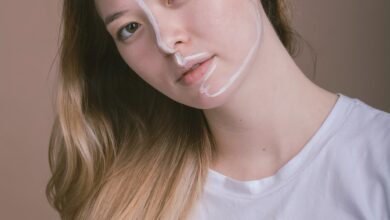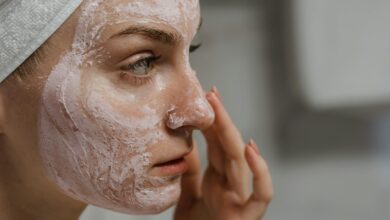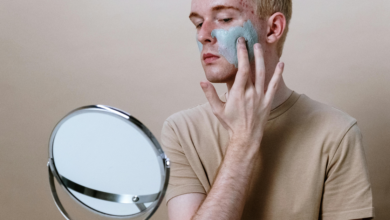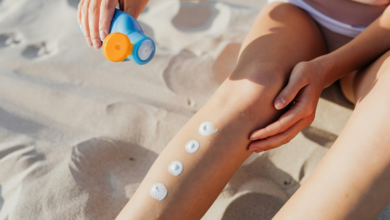Stages of a Blind Pimple: Complete Guide to Relief
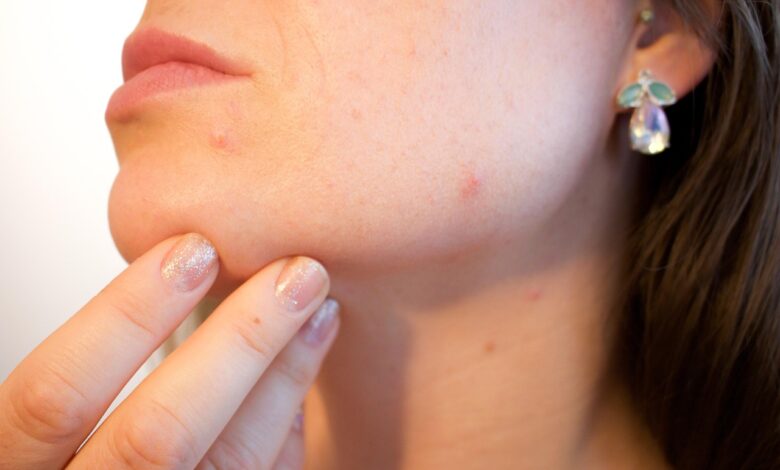
Blind pimples are among the most frustrating and painful types of acne. Unlike regular pimples that surface visibly on the skin, blind pimples develop deep under the skin and never form a whitehead. Because they’re hard to see and treat, many people struggle to understand them and make the mistake of aggravating the condition through improper handling.
In this article, we’ll explore the stages of a blind pimple, how they progress, what signs to look for, and the best treatment options at each stage. By understanding the lifecycle of a blind pimple, you can better manage your skin and reduce the risk of scarring or further inflammation.
What Is a Blind Pimple?
A blind pimple is a type of cystic acne that forms beneath the surface of the skin. These pimples do not have a visible “head” and often feel like a hard, painful bump. They occur when oil, bacteria, and dead skin cells get trapped deep within a pore, leading to inflammation.
Because they’re embedded below the skin’s surface, blind pimples are harder to treat than surface-level acne and can last for days or even weeks if not managed properly.
Causes of Blind Pimples
Before diving into the stages, it’s important to understand what leads to blind pimples. Some common causes include:
Hormonal fluctuations (especially during puberty, menstruation, or stress)
Excess sebum (oil) production
Clogged pores due to makeup, dirt, or dead skin cells
Bacterial infections (mainly Propionibacterium acnes)
Genetic predisposition
Irritation from tight clothing, face masks, or helmets
The 5 Stages of a Blind Pimple
Blind pimples follow a predictable pattern from formation to healing. Each stage presents different symptoms and requires tailored treatment. Understanding these stages is key to minimizing discomfort and preventing long-term skin damage.
Stage 1: Formation Below the Surface
The first stage involves the initial formation of the pimple deep within the skin. This is triggered when a hair follicle or pore becomes blocked by sebum and dead skin cells. Bacteria then proliferate within the clogged pore, triggering an immune response.
Symptoms:
No visible bump yet
Slight tenderness or irritation
A sense of pressure under the skin
What to Do:
Avoid touching the area.
Begin gentle cleansing with a salicylic acid face wash.
Use a warm compress to help reduce inflammation and encourage circulation.
Stage 2: Inflammation and Bump Development
At this point, the body’s immune system reacts to the bacteria, and the area becomes red and swollen. A hard lump forms under the skin, typically without a whitehead.
Symptoms:
Noticeable redness
Tender, swollen bump
Mild to intense pain
What to Do:
Apply a warm compress 2–3 times a day for 10–15 minutes.
Use an over-the-counter benzoyl peroxide spot treatment.
Avoid trying to pop or squeeze the bump—this can push the infection deeper.
Stage 3: Peak Inflammation
This is the most painful stage. The bump may increase in size and become more inflamed. The pressure under the skin intensifies as pus forms but remains trapped beneath the surface.
Symptoms:
Increased redness and swelling
More intense pain
Bump may feel harder or more dome-shaped
What to Do:
Continue warm compresses.
Introduce a topical retinoid if recommended by a dermatologist.
Consider using a hydrocolloid patch overnight (if surface inflammation becomes visible).
You may also use topical anti-inflammatory products containing niacinamide or tea tree oil.
Stage 4: Beginning of Healing
During this stage, the immune system begins to fight off the infection. The swelling may reduce, and the pain starts to subside. The pimple might start to shrink slowly.
Symptoms:
Reduced tenderness
Less redness
Decreased size of the bump
What to Do:
Continue gentle skincare with hydrating and soothing ingredients like aloe vera.
Avoid using drying agents aggressively—they can slow down healing.
Do not pick or poke at the skin.
Stage 5: Resolution and Aftermath
The final stage is where the pimple fully subsides. The skin starts to return to its normal texture, although a dark spot (post-inflammatory hyperpigmentation) or scar may remain.
Symptoms:
Flat or fading bump
No more pain
Potential for slight discoloration
What to Do:
Apply sunscreen daily to prevent dark marks from worsening.
Use products with ingredients like vitamin C or niacinamide to brighten the skin.
If scarring remains, consult with a dermatologist about professional treatments such as chemical peels, laser therapy, or microneedling.
How Long Do Blind Pimples Last?
Blind pimples typically last 5 to 15 days, depending on their severity and how they’re treated. Without proper care, they may linger for several weeks or evolve into deeper cysts. Prompt and appropriate action can significantly reduce their lifespan and severity.
How to Prevent Blind Pimples
Preventing blind pimples starts with good skincare habits and lifestyle adjustments:
Cleanse twice daily with a gentle, non-comedogenic cleanser.
Avoid heavy makeup or always remove it before bed.
Exfoliate regularly (2–3 times a week) with BHA or AHA.
Hydrate your skin—even oily skin needs moisture.
Manage stress, as cortisol spikes can increase oil production.
Maintain a healthy diet, avoiding excess dairy and processed foods.
Change pillowcases and towels frequently to avoid bacteria build-up.
When to See a Dermatologist
While most blind pimples can be managed at home, medical intervention may be necessary if:
The pimple does not improve after 10–14 days
Pain or swelling is severe
Pimples keep recurring in the same spot
There’s a risk of scarring or cystic acne
A dermatologist may prescribe oral antibiotics, cortisone injections, or retinoid medications to manage stubborn blind pimples effectively.
FAQs About Blind Pimples
Q1: Can you pop a blind pimple?
No. Attempting to pop a blind pimple can push the infection deeper into the skin, worsening inflammation and increasing the risk of scarring.
Q2: Are blind pimples a sign of poor hygiene?
Not necessarily. Blind pimples are often caused by internal factors, such as hormonal fluctuations or stress. Good hygiene helps, but it’s not the only factor in prevention.
Q3: Do blind pimples always form a head?
No. Most blind pimples do not surface and remain deep under the skin. In some cases, they may form a whitehead after several days, but it’s not guaranteed.
Q4: What’s the fastest way to treat a blind pimple?
Applying warm compresses and spot treatments like benzoyl peroxide can help speed up the healing process. In-office cortisone injections offer the fastest relief.
Q5: Can stress cause blind pimples?
Yes. Stress triggers hormonal fluctuations that increase oil production, which can lead to clogged pores and the formation of blackheads, also known as blind pimples.
Conclusion
Blind pimples are more than just a cosmetic nuisance—they’re a sign that something is off deep within your skin. By recognizing the five key stages of a blind pimple, you can respond appropriately at each phase and avoid the pain, swelling, and potential scarring that comes from improper handling.
Understanding how blind pimples form and what to do at each step helps you stay in control of your skin health. Whether you choose to treat them at home or consult a dermatologist, early intervention is the key to clear, healthy skin.
